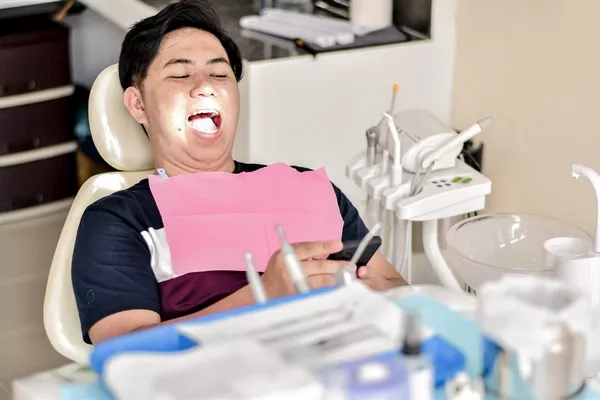Wisdom tooth extraction is a common dental procedure that many people undergo during their late teens or early twenties. Understanding the duration of the procedure, the recovery time, and the necessary post-surgery care is crucial for those preparing for this experience. This comprehensive guide will delve into the details of the process, ensuring you are well-informed and ready for what lies ahead.
Procedure Duration
The actual process of wisdom tooth extraction can take about 30 minutes to one hour, depending on the complexity of the case and the patient’s individual anatomy. Several factors influence the duration of the procedure, including the position of the tooth, whether the tooth is impacted, and the experience of the dental surgeon.
Factors Affecting Procedure Duration
Tooth Position: Wisdom teeth that have fully erupted and are positioned similarly to other teeth are typically easier and quicker to remove. In contrast, teeth that are impacted (trapped in the jawbone or gums) can require more time to extract.
Complexity of Impaction: Teeth that are partially erupted or lying horizontally may need to be broken into smaller pieces before removal, extending the procedure time.
Patient’s Anatomy: Individual anatomical differences, such as the density of the jawbone and proximity to nerves, can affect the ease and duration of the extraction.
Step-by-Step Extraction Process
Anesthesia Administration: The procedure begins with the administration of anesthesia. Depending on the patient’s preference and the complexity of the extraction, this could be local anesthesia, sedation anesthesia, or general anesthesia. This step ensures that the patient is comfortable and pain-free during the procedure.
Incision and Exposure: For impacted teeth, the surgeon will make an incision in the gum tissue to expose the tooth and bone. In some cases, a portion of the bone covering the tooth may need to be removed.
Tooth Sectioning: If the tooth is difficult to remove in one piece, the surgeon may cut the tooth into sections for easier removal.
Extraction: Using dental instruments, the surgeon will carefully loosen the tooth and extract it from its socket.
Cleaning the Site: After the tooth is removed, the site will be cleaned of any debris from the tooth or bone.
Stitches: The surgeon may place stitches to close the gum incision and promote healing. Some stitches dissolve over time, while others may need to be removed at a follow-up appointment.
Gauze Placement: Finally, a piece of gauze will be placed over the extraction site to control bleeding and help a blood clot form.
Recovery Time
Full recovery from wisdom tooth removal can take up to 2 weeks, with the first few days being crucial for initial healing. The recovery process involves several stages, each requiring specific care and attention to ensure proper healing and prevent complications.
Immediate Post-Surgery Period (First 24 Hours)
The first 24 hours after surgery are critical for forming a blood clot in the extraction site, which is essential for proper healing. During this time, patients should:
Rest: Avoid physical activities and rest as much as possible.
Manage Bleeding: Bite gently on gauze pads, changing them as directed by the surgeon, to control bleeding.
Pain Management: Take prescribed pain medications or over-the-counter pain relievers as needed.
Cold Compress: Apply an ice pack to the outside of the cheek near the extraction site to reduce swelling.
Early Recovery Period (2-3 Days Post-Surgery)
During the first few days following the extraction, patients should focus on:
Maintaining Oral Hygiene: Avoid brushing near the extraction site, but gently rinse the mouth with warm salt water or a prescribed rinse to keep the area clean.
Dietary Adjustments: Stick to soft foods like yogurt, applesauce, and mashed potatoes. Avoid hot, spicy, or hard foods that could irritate the extraction site.
Activity Restrictions: Refrain from strenuous activities to prevent dislodging the blood clot.
Ongoing Recovery (Up to 2 Weeks)
Resume Gentle Brushing: Gradually resume brushing near the extraction site as it heals, being careful not to disturb the clot.
Follow-Up Appointment: Attend any scheduled follow-up appointments to ensure proper healing and remove stitches if necessary.
Monitor for Complications: Watch for signs of infection, dry socket, or other complications, and contact the surgeon if any issues arise.
Post-Surgery Care
Proper post-surgery care is essential for promoting healing and preventing complications. Here are some key tips for caring for the wound after surgery:
Wound Care
Rinsing: Begin rinsing your mouth gently with warm salt water or a prescribed mouthwash 24 hours after surgery. Do this several times a day, especially after meals, to keep the extraction site clean.
Avoid Disturbing the Clot: Do not use straws, smoke, or spit forcefully, as these actions can dislodge the blood clot and lead to dry socket.
Pain and Swelling Management
Pain Medications: Take prescribed painkillers or over-the-counter medications such as ibuprofen or acetaminophen as directed to manage pain.
Ice Packs: Apply ice packs to the outside of your face for 15-20 minutes at a time during the first 48 hours to reduce swelling.
Dietary Considerations
Soft Foods: Stick to soft and easy-to-chew foods like soups, smoothies, scrambled eggs, and oatmeal. Avoid crunchy, chewy, or spicy foods that can irritate the wound.
Hydration: Drink plenty of fluids, but avoid using straws to prevent dislodging the blood clot.
Potential Complications
While wisdom tooth extraction is generally safe, there are potential complications that can arise. Being aware of these and knowing when to seek medical advice is important.
Common Complications
Swelling and Bruising: These are common after surgery and should subside within a few days. Applying ice packs can help reduce swelling.
Pain: Some pain and discomfort are normal, but severe pain that doesn’t improve with medication could indicate a problem.
Limited Mouth Opening: It’s normal to experience some difficulty opening your mouth wide after surgery. This usually improves within a few days.
When to Seek Medical Advice
Persistent Bleeding: If bleeding continues for more than 24 hours or is heavy, contact your dentist or oral surgeon.
Signs of Infection: Symptoms such as fever, increased swelling, pus discharge, or a foul taste in the mouth can indicate an infection.
Dry Socket: Severe pain that radiates to the ear, eye, or temple, along with an empty-looking socket, may be a sign of dry socket. Seek immediate medical attention if you suspect this condition.
Activity Restrictions
After wisdom tooth extraction, it’s important to follow guidelines for returning to normal activities to ensure proper healing.
Initial Rest Period
First 24-48 Hours: Rest as much as possible and avoid physical exertion. Keep your head elevated to reduce swelling.
Work and School: Most patients can return to work or school within 2-3 days, depending on the nature of their activities and how they feel.
Avoiding Strenuous Activities
Exercise: Avoid strenuous exercise, heavy lifting, and sports for at least a week after surgery. These activities can increase blood pressure and cause bleeding or dislodge the blood clot.
Gradual Resumption: Gradually reintroduce physical activities based on how you feel and any guidance provided by your surgeon.
Dietary Adjustments
Eating the right foods after surgery is crucial for recovery and comfort. Here’s a guide to help you make appropriate dietary choices:
First 24-48 Hours
Cold and Soft Foods: Consume cold, soft foods like yogurt, pudding, and smoothies. Avoid hot foods and beverages as they can increase bleeding.
Hydration: Drink plenty of water but avoid using straws, as the suction can dislodge the blood clot.
First Week
Soft, Nutrient-Rich Foods: Focus on nutritious, soft foods like scrambled eggs, mashed potatoes, soft fruits, and cooked vegetables. These foods are easy to eat and won’t irritate the extraction site.
Avoid Irritating Foods: Steer clear of spicy, crunchy, or acidic foods that can cause discomfort or disrupt healing.
Gradual Reintroduction
Solid Foods: Gradually reintroduce solid foods into your diet as you feel comfortable. Begin with small bites and chew away from the extraction site.
Balanced Diet: Ensure you maintain a balanced diet to support healing and overall health.
Conclusion
Understanding the duration and recovery process of wisdom tooth extraction helps alleviate anxiety and ensures a smoother experience. The actual extraction typically takes about 30 minutes to one hour, but full recovery can take up to 2 weeks. Following proper post-surgery care, being aware of potential complications, and making necessary dietary and activity adjustments are crucial for a successful recovery. Always consult with your dental professional for personalized advice and care tailored to your specific needs.
FAQs about Wisdom Teeth Removal
1. Can I remove just 1 wisdom tooth?
Yes, it is possible to remove just one wisdom tooth if that is the only one causing issues. Dentists or oral surgeons will evaluate the specific circumstances of your oral health and recommend the appropriate course of action. Sometimes, only one wisdom tooth needs to be removed due to infection, impaction, or decay, while the others may not pose any problems.
2. How long does it take for a wisdom tooth extraction to fill in?
The healing process after a wisdom tooth extraction typically takes about 1-2 weeks for the initial phase, where the soft tissue heals. However, it can take several months for the bone to fully fill in the socket where the tooth was removed. Most patients experience significant healing within 3-4 weeks, but complete healing can take up to six months.
3. How painful is wisdom teeth removal?
The pain experienced during wisdom teeth removal varies among individuals and depends on several factors, including the complexity of the extraction and the patient’s pain tolerance. During the procedure, anesthesia is used, so you should not feel pain, though you might feel pressure. After the anesthesia wears off, it’s normal to experience some discomfort, swelling, and soreness. Pain can be managed with prescribed painkillers and over-the-counter medications. Most patients find that the pain subsides significantly within a few days post-surgery.
4. How bad is wisdom teeth removal without anesthesia?
Undergoing wisdom teeth removal without any form of anesthesia is not recommended. Anesthesia helps manage pain and makes the procedure bearable. Without anesthesia, the procedure would be extremely painful and traumatic, as it involves cutting into the gum and possibly breaking the tooth before removal. Local anesthesia, sedation, or general anesthesia is typically used to ensure patient comfort and minimize pain during the procedure.
You Might Be Interested In





























